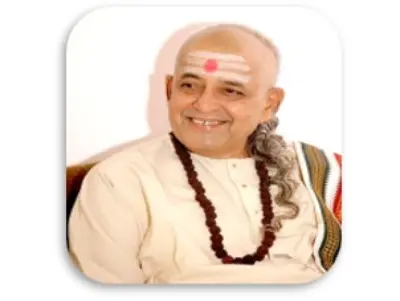Rope & Belt therapy is pioneered by Yogacara BKS Iyengar Guruji way back
in 1970. Dr. S. V. Karandikar, an ardent disciple of Guruji further developed it.
Being an expert clinician & blessed with a research mind, he applied his
anatomical & physiological acumen for Musculo – skeletal disorders.
It is used as an adjunct in conservative management of Osteoarthritis of Knee
Joint, Lumbar & Cervical Spondylosis.
Eminent Orthopedic Surgeon, Padma Shree Dr. S. M. Hardikar Sir approves
and advises it for selective cases.
The basic principles for Rope & Belt Therapy are -
- Stretching of selective skeletal muscles.
- Restoration of alignment of bones.
- Correction of weight bearing axis of body.
- Improvement of Postural awareness.
- Passive Correction of Pelvic & Shoulder Girdles.
 BKS Iyengar Guruji
BKS Iyengar Guruji
 Dr. S. V. Karandikar
Dr. S. V. Karandikar
Rope and Belt Therapy is a valuable application in modern Yogic Science. The
classical Yogic postures form its base. The patients with history of pain &
muscular spasm, are unable to perform & practice classical Yogic postures.
Rope & belt Therapy is extremely useful in such cases. It is advised for one
month duration to six months after which the patients’ day to day activity
comes back to normal & one can practice classical Yogic postures & moderate
aerobic activities.
Rope & Belt Therapy is extremely useful for highly motivated, adherent,
studious, self-care type persons. In the case of senior citizens, it requires a
support system at family level.
Grading of OA Knee
- Grade 0 - No radiographic features of osteoarthritis are present.
- Grade 1 - Doubtful joint space narrowing (JSN) and possible osteophytic lipping.
- Grade 2 - Definite osteophytes and possible JSN on anteroposterior weight-bearing radiograph.
- Grade 3 - Multiple osteophytes and definite JSN, sclerosis, possible bony deformity.
- Grade 4 - Large osteophytes , marked JSN, severe sclerosis, definite deformity.